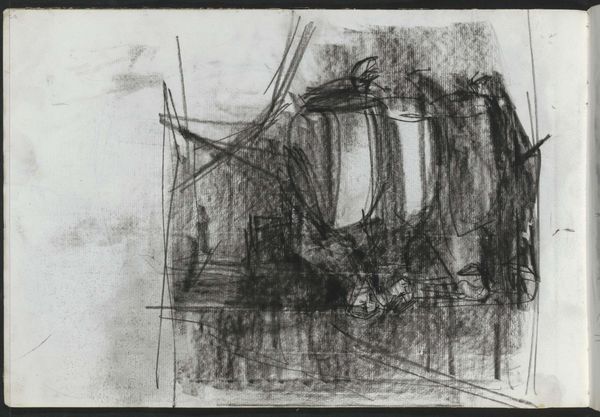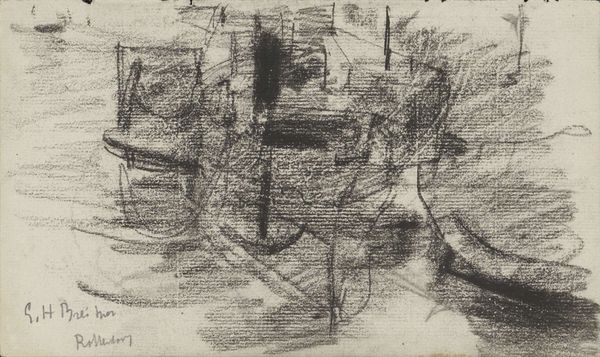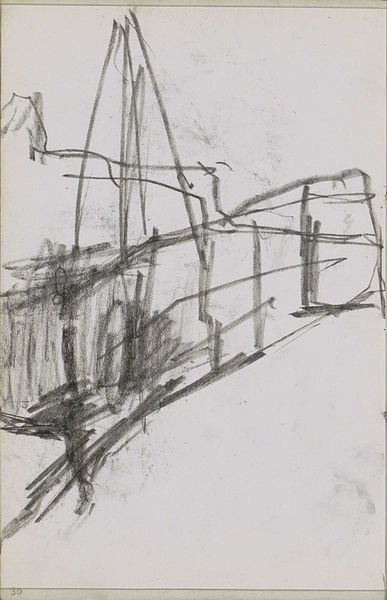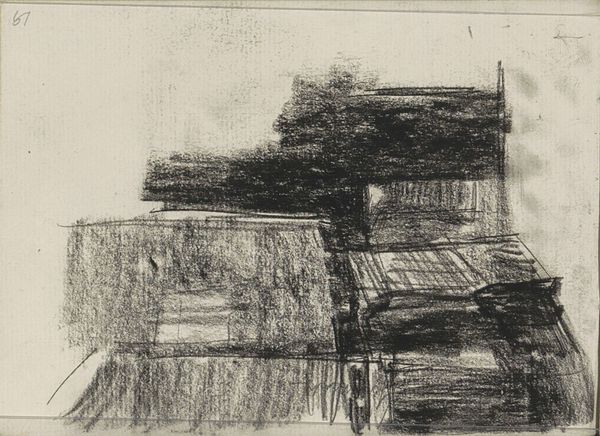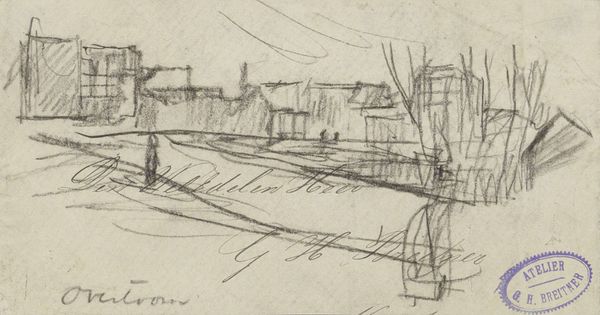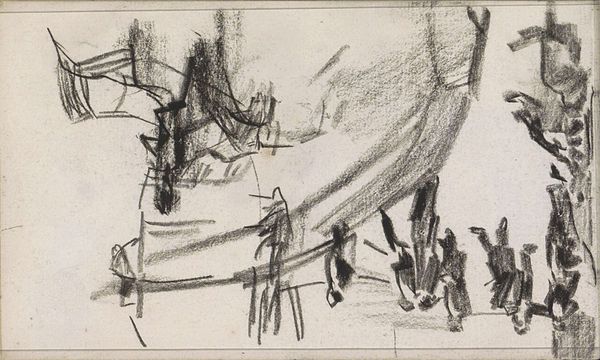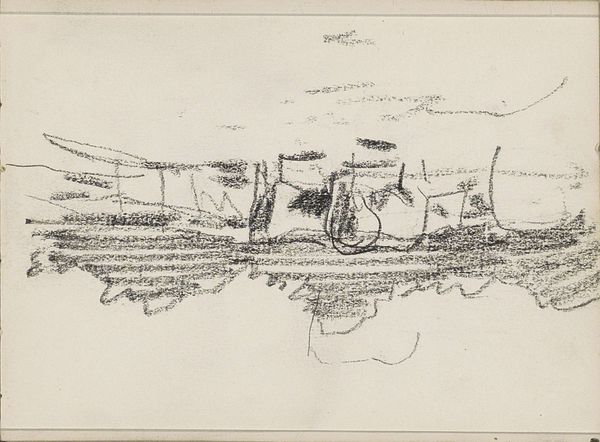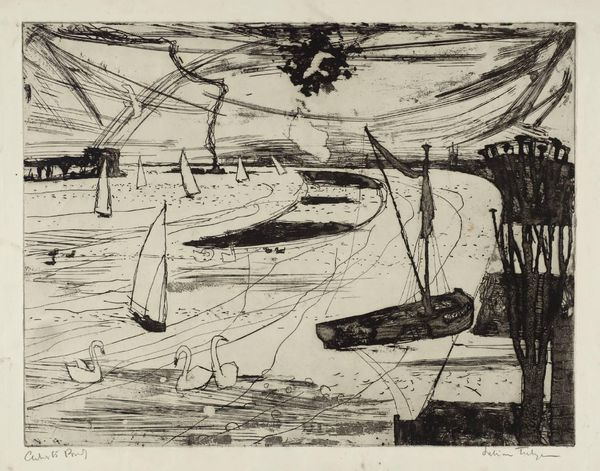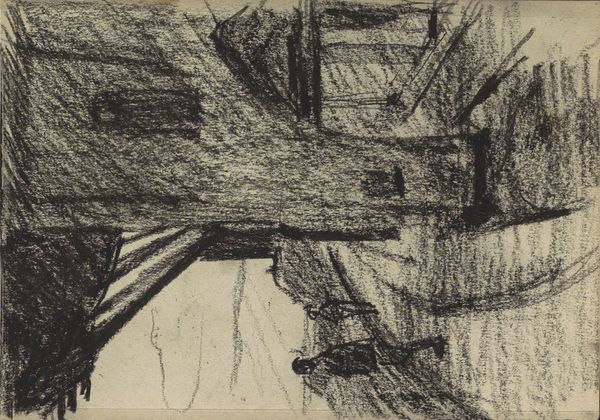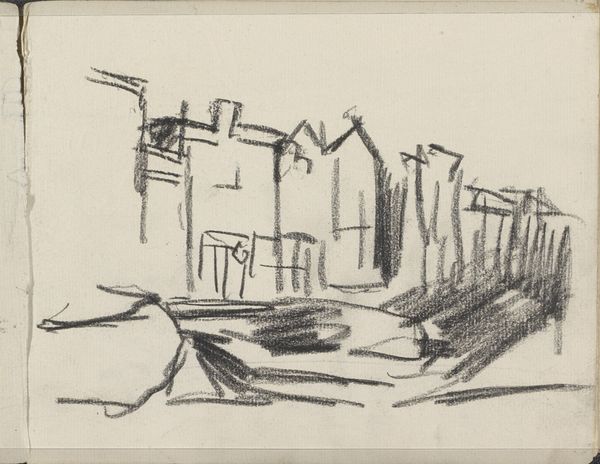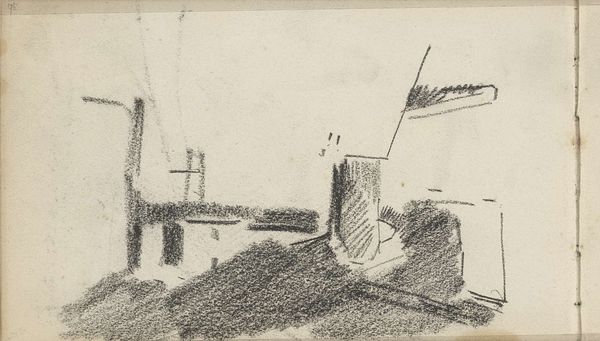
Copyright: Rijks Museum: Open Domain
Curator: Isaac Israels created this graphite drawing on paper, titled "Three Women on the Street in Amsterdam," sometime between 1886 and 1934. Editor: My immediate thought is: charcoal rubbing from a tombstone, or a very dark daydream! It has that haunted, blurry quality, doesn't it? Curator: It’s the energetic, almost frantic use of graphite that creates that effect, I think. Look how Israels uses short, choppy lines to define the figures and the environment. There's this incredible dynamism despite the limited tonal range. It really pulls you into a specific moment in the city. Editor: Dynamism is an interesting way to put it. For me, the drawing emphasizes a certain kind of transient anxiety that arises from navigating urban spaces—always aware, yet detached. There is very little detail given to the faces of the women, but you sense their awareness through posture. It's amazing, but unsettling. Curator: And think about the context! Israels was a key figure in the Amsterdam Impressionist movement, capturing everyday life with a fleeting, informal quality. He was fascinated by the energy of the city. He captured figures in motion – shoppers, workers, passers-by all rendered in this spontaneous way, reflecting the ever-changing nature of modern life. Editor: The sketch captures this rapid sense of the modern and its subjects as types rather than specific figures. We are, ourselves, transformed into detached passers-by as we consume the work! Is that intentional? Do we know what kind of paper Israels chose? Curator: Unfortunately, specific details about the paper remain unknown, though given Israels’ impressionistic practice, we can imagine this rough drawing allowed him to make notes, and later to revisit his work on canvases. What strikes me is how he conveys atmosphere. Those sweeping lines above—are they the sky, buildings? It evokes the hustle of Amsterdam’s streets. Editor: Indeed. I'm reminded how form triumphs—a semiotic dance of darkness and light—that makes it read, at least in my eyes, as almost confrontational, pushing up against the viewer. It is definitely food for thought about our encounters. Curator: For me it's that capturing of a stolen moment that gets me thinking about seeing and feeling the life that continues when we leave. Editor: Yes, definitely. It is amazing how such fleeting art gives life to stolen moments.
Comments
No comments
Be the first to comment and join the conversation on the ultimate creative platform.
